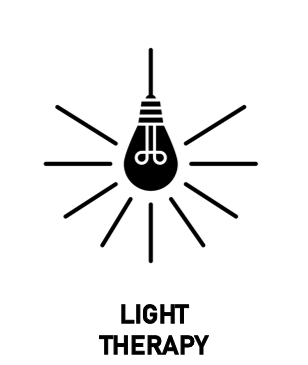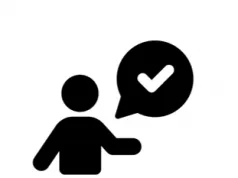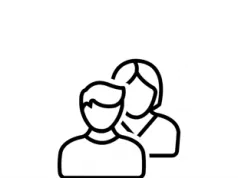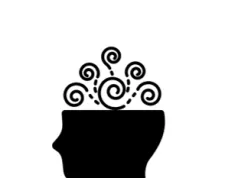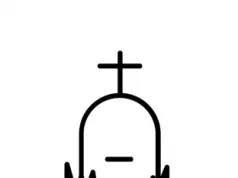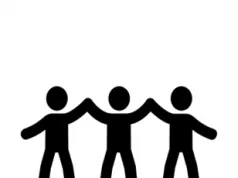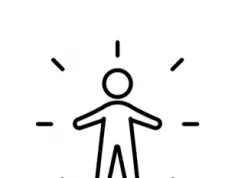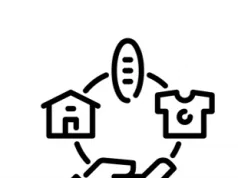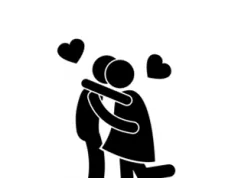Light Therapy is a type of therapy that can be used to treat mental health conditions. It is usually used exclusively for treating Seasonal Affective Disorder.
There are many different types of talking therapy. Therefore, it is important to consider your choices. This article provides some key areas worth knowing in regards to Light Therapy.

What is Light Therapy?
Light Therapy: Light therapy is a form of therapy that is best known as a treatment for Seasonal Affective Disorder. It involves an individual sitting in front or near a specially-constructed light box for around 30-60 minutes a day. The light box simulates sunlight, which appears to be crucial in the treatment of SAD. This therapy can help other mental health conditions too.
1. Light Therapy involves sitting in front of a specially-constructed light box
Light Therapy revolves around a person sitting in front of a light box that has been specially-constructed for this purpose. They will sit besides this box for 30-60 minutes a day.
This is all that Light therapy involves – which makes it a very simple and straight-forward type of therapy, and less of a commitment than talking therapies.
2. Light Therapy works best for Seasonal Affective Disorder (SAD)
Light therapy is primarily used to treat Seasonal Affective Disorder – which is a condition that involves low mood during winter months.
However, it can feasibly be used for other conditions too, including depression and anxiety. Though it is unlikely to lead to remission of symptoms.
3. The Science behind Light Therapy
Light therapy has an interesting science to it. It is believed that SAD is linked to a lack of natural sunlight – this is where the light box comes in.
The light box essentially simulates sunlight. By sitting in front of the light box, the brain is encouraged to produce the chemical serotonin in response to the light. Serotonin is a chemical in the brain that is linked to mood.
The light also appears to stop the brain from producing too much melatonin – another chemical – which should stop the patient from feeling overly sleepy.
4. The evidence for Light therapy is good!
The existing research suggests that light therapy is a very useful tool for treating SAD, with research showing that it is just as effective as antidepressants for SAD [1].
However, the evidence isn’t too positive for mental health conditions that last beyond the winter months. But anyone feasibly may see a reduction in their symptoms with light therapy.
5. Choosing the right light box is important
There is no shortage of light boxes available on the internet. But cheaper light boxes will commonly not filter out harmful ultraviolet rays – which can cause serious health problems.
Moreover, it is best to look for a light box that is between 2,500lux and 10,000lux – with the higher number the better. “Lux” refers to the brightness of the light.

6. Side effects are possible, though rare
Light therapy does have the potential to cause side effects. The most common of these side effects are headaches, blurred vision and fatigue.
Most people will have no side effects whatsoever from light therapy, but it is something to look out for when partaking in this type of therapy.
7. Light therapy doesn’t require much effort
One of the biggest advantages of light therapy is that you can complete the therapy without much effort at all. Light therapy purely involves sitting next to a box for 30-60 minutes a day.
This contrasts hugely to other forms of therapy, which requires extensive effort and engagement for the therapy to work as intended.
8. The light box can be used again in the future
SAD often returns during the winter months, but the good news is that you will be able to use the same light box, year-after-year if necessary.
Hopefully one course of light therapy will be enough for the symptoms to lessen significantly or totally disappear. However, if the symptoms do return, then the light box can be used again.
It is therefore an excellent purchase to make, and potentially a long-term investment into your mental health and general well-being.
See Also
- Therapy Home
- Everything You Need To Know About Talking Therapy
- FAQ’s About Talking Therapy
- Light Therapy: Everything You Need to Know
- The Advantages and Disadvantages of Light Therapy
- 8 Things You Should Know About Light Therapy
- Light Therapy: Your Questions Answered
Disclaimer
This website should be used purely for informational purposes, and does not intend to, nor should it ever, be used as a replacement for professional medical advice.
We strive to keep all of our pages updated, and ensure that our website is full of factual and in-depth information. However, we encourage you to browse this website with care.
As a reminder, this website and all content within it cannot and should not replace the advice of a trained medical professional. You can read our full disclaimer at this link.
Helplines
If you are struggling with your mental health, help is available. With the right support and treatment, you can make a recovery. For information on helplines, or if you are in a state of crisis, please visit our crisis page by clicking on the relevant link for your geographical location (United Kingdom), (United States), (International). You can also see how to get mental health treatment and the process involved by clicking this link.
References
[1] Lam, R., Levitt, A., Levitan, R. (2006). The Can-SAD Study: A Randomized Controlled Trial of the Effectiveness of Light Therapy and Fluoxetine in Patients With Winter Seasonal Affective Disorder. American Journal of Psychiatry. 163 (5), p805-812.

